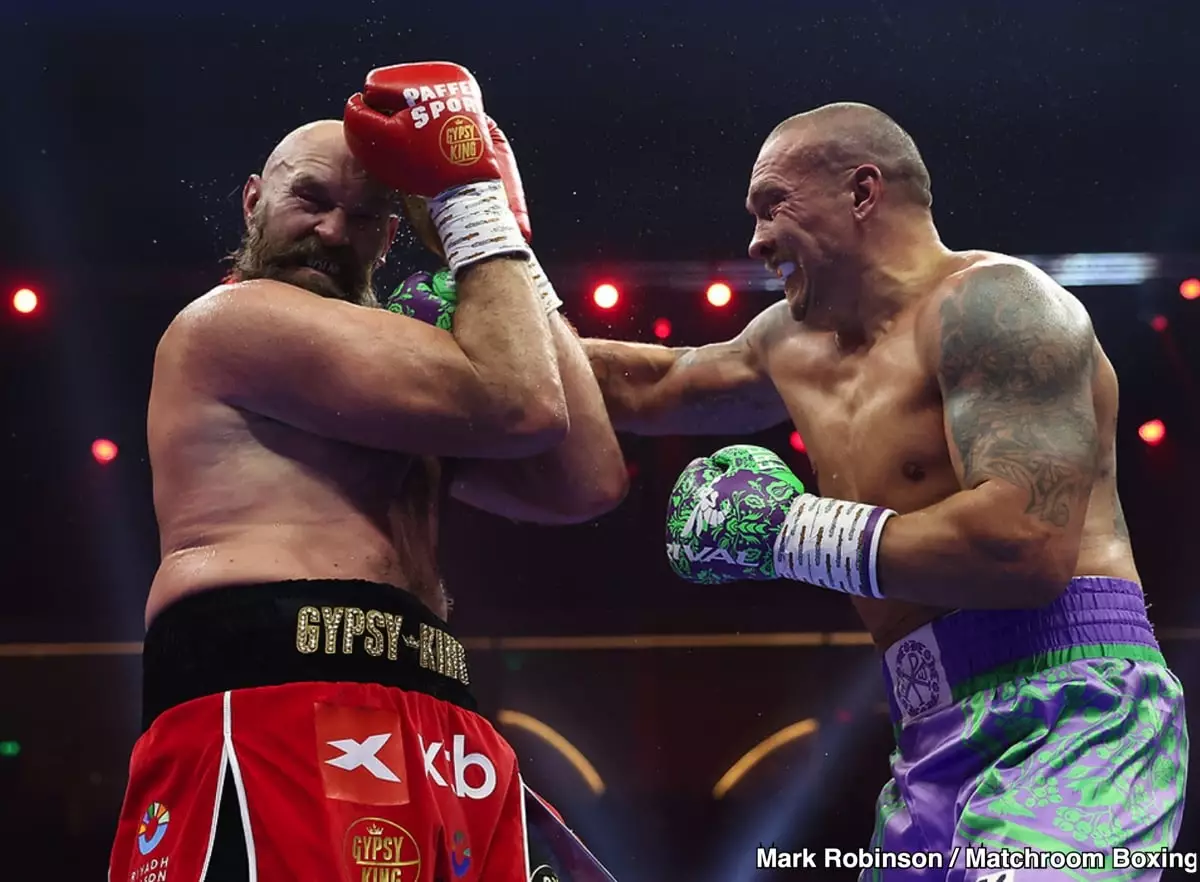In the world of boxing, strategy plays an essential role in determining the outcome of a match. Last Saturday, during the highly anticipated bout between Tyson Fury and Oleksandr Usyk, strategy—or the lack thereof—came to the forefront as commentators scrutinized Fury’s performance. Paulie Malignaggi, a respected commentator and former world champion, expressed critical views on Fury’s decision-making and physical conditioning during the fight, particularly in the crucial 11th and 12th rounds.
Fury entered the ring at a hefty 281 pounds, significantly heavier than his last appearance. This increase in weight raised immediate questions about his conditioning and strategy. Malignaggi noted that Fury seemed to struggle against Usyk’s dynamic style, indicating that, instead of leveraging his size, he was often caught in an attempt to hold rather than press the attack. The choice of holding can be interpreted in two ways: a calculated decision to slow down the pace or an instinctual reaction to fatigue. If it were the former, it revealed an uncharacteristic lack of confidence; if the latter, it demonstrated a failure to maintain peak physical condition.
Fury’s approach in the latter rounds was particularly alarming. Malignaggi emphasized that he had expected Fury to assert himself physically against Usyk, but after enduring relentless movement and angles from Usyk, Fury seemed hesitant. This hesitation pointed to a larger issue: the toll taken by additional weight, which clearly affected Fury’s stamina and overall performance throughout the bout.
Usyk’s performance undoubtedly deserves commendation. With a perfect record of 23 wins and an impressive array of punch angles and feints, he outmaneuvered Fury repeatedly. Malignaggi highlighted Usyk’s ability to create opportunities and avoid direct confrontations, a stark contrast to how Fury had previously overwhelmed opponents like Deontay Wilder. Fury’s usual strategy of overpowering his opponents was rendered ineffective against Usyk’s quick footwork and lateral movement.
The fight highlighted the difference in tactical acumen. While Fury attempted to apply pressure, he found himself in a reactive position instead of a proactive one. Usyk began to dictate the pace, exploiting Fury’s vulnerability and turning the bout into a game of chess. As Malignaggi stated, Usyk’s ability to make Fury fight his fight was a critical factor in the match’s dynamics.
As the fight progressed into the final rounds, the stakes elevated significantly. Malignaggi pointed out that both fighters had been competitive up until that point, but it was Usyk who seized the initiative when it mattered most. Fury’s choice to hold and “waste time” rather than actively seek to win the rounds was pivotal. This speaks volumes about the psychological pressure of the moment—the assumption that Fury would rally in the climax of a competitive match proved incorrect.
In these last two rounds, Fury’s unwillingness to engage fully allowed Usyk to solidify his lead. The unanimous decision scored at 116-112 in favor of Usyk reflected not only his effectiveness during those key rounds but also Fury’s inability to capitalize on the opportunity to finish strong. The psychological barriers evident in that fight raise questions about Fury’s championship mentality, especially at 36 years old.
For Fury, this loss could serve as a turning point in his career. The opportunity for a trilogy against Usyk or a unifying match against Anthony Joshua now hangs in the balance. How he responds to this defeat will be crucial. It’s now imperative for Fury to address both his physical conditioning and strategic approach to reclaim his standing in the heavyweight division.
Paulie Malignaggi’s critical appraisal of Tyson Fury’s performance against Oleksandr Usyk offers a valuable insight into the intricacies of high-level boxing. This bout showcased how even the most skilled fighters can falter when they fail to adapt to their opponents and the importance of maintaining fitness levels suited to their fighting style. As boxing moves forward, the lessons learned from this match will resonate not just for Fury, but for all heavyweight contenders eager to reach the pinnacle of the sport.


Leave a Reply